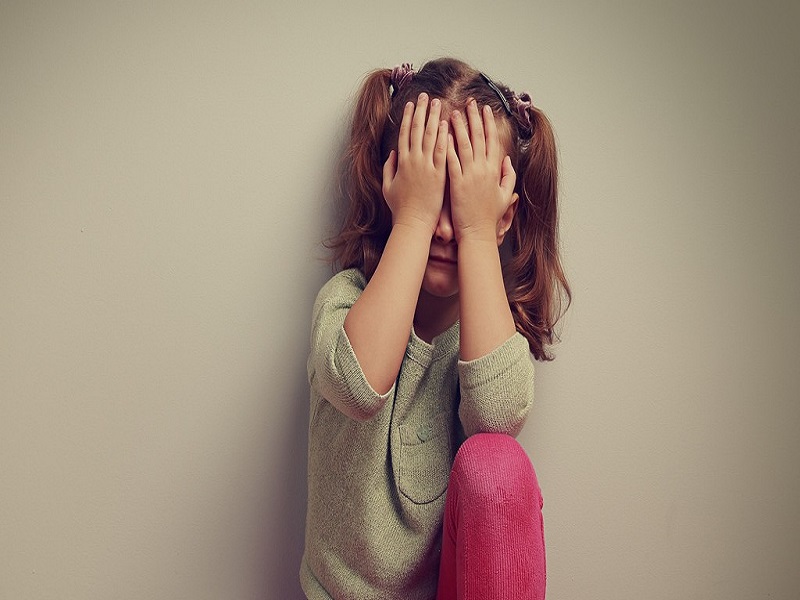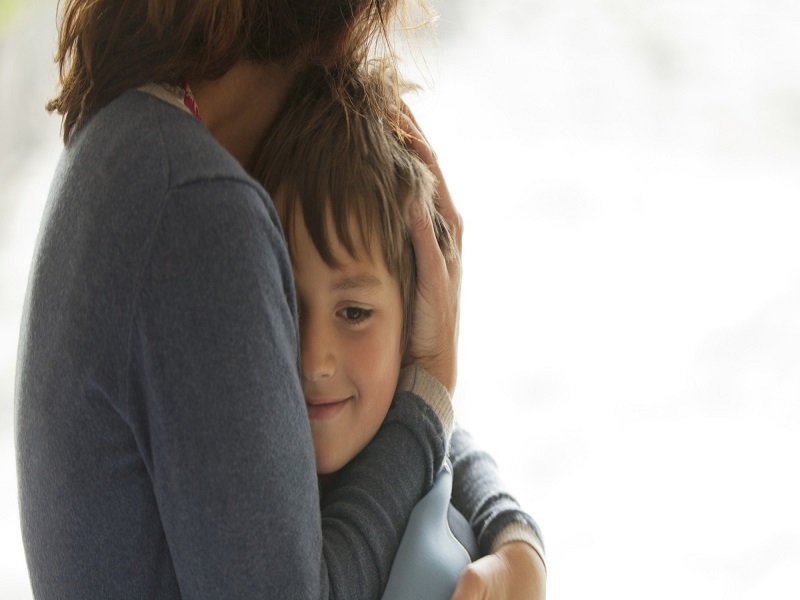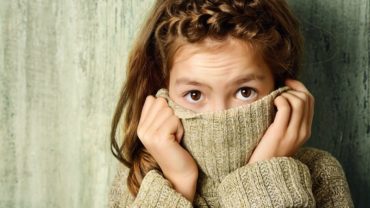Difficulty concentrating, a racing heart, a sinking feeling of fear in the pit of your stomach — many adults are familiar with symptoms of anxiety.
Today, there seems to be a greater recognition of anxiety disorders than ever before. But for young kids who are struggling, especially those who lack the knowledge to fully understand what they’re experiencing, these symptoms can leave them feeling afraid and very alone.
According to the American Academy of Pediatrics (AAP), anxiety disorders are the most commonly occurring mental health disorder among children, affecting approximately 8 percent of kids under the age of 18.
The symptoms these kids exhibit might include trouble sleeping, fear surrounding social situations and separation from loved ones, refusal to go to school, and physical complaints.
Dr. Arthur Lavin, AAP chair of the Committee on Psychosocial Aspects of Child and Family Health, recently told Healthline, “Anxiety is actually a complicated phenomenon. What we’ve come to realize is a lot of people have a steady stream of anxiety. It’s part of your personality. It has nothing to do with events in your life, though certain events can increase and decrease anxiety. But some people just have higher or lower levels of anxiety than others.”
The Centers for Disease Control and Prevention (CDC) reports Trusted Source that depression and anxiety have increased over time, with the rate of diagnosis among 6- to 17-year-olds jumping from 5.4 percent in 2003 to 8 percent in 2007 and 8.4 percent in 2011 and 2012.
But Dr. Lavin isn’t convinced the numbers are actually increasing. He thinks it’s at least possible what we’re seeing is more a factor of our increasing interest in, and ability to diagnose, anxiety disorders.
“Even if the numbers haven’t changed, it’s a huge problem that impacts a person’s ability to relate to other people,” he said.
As Lavin pointed out, a large number of the people who are affected are children. But many of those kids won’t get the treatment they need — only 6 in every 10 Trusted Source diagnosed, according to the CDC.

A new treatment option
The reason many young children aren’t getting the help they need is because there are a variety of barriers to treatment for kids living with anxiety.
Issues like poor health insurance coverage, lack of access to doctors and health programs, adults failing to identify the issue, and a child’s resistance to treatment can all make helping a child with anxiety difficult.
But an experimental program at Yale University is aiming to address that last barrier. The goal of this program isn’t to treat the child with anxiety in a typical treatment setting, but to instead train the parents in how to best help their child.
Eli Lebowitz, PhD, the Yale School of Medicine psychologist responsible for developing this training, recently told Healthline, “In terms of the problem, we’ve known for a long time that parents play a role in anxiety.”
He was quick to explain that he isn’t suggesting parents are the root cause of their child’s anxiety. In fact, he was very clear that isn’t the case at all. Instead, he said, “Parents can be deeply impacted by their child’s struggle with anxiety. They get drawn in in a variety of ways.”
Lebowitz said the idea for a parent-based treatment program came about organically.
He explained that he was working in a clinic for children with behavior problems when it occurred to him that addressing those behavior problems often meant much of the work was being done by the parents. They would learn techniques and tools to take home and use with their children there.
“And that’s natural,” he explained, “because children with severe behavioral problems aren’t always good candidates for therapy themselves. I would find myself explaining to parents that they can have a big impact, even if the child isn’t involved.”
He began to wonder how a similar treatment plan might benefit children with anxiety. The result was a program called SPACE: Supportive Parenting for Anxious Childhood Emotions.
The goal of SPACE
Lebowitz explained that the SPACE program is trying to accomplish two things, and both of them involve changes parents should make to their own behavior.
“This is a critical point because previous attempts in involving parents in childhood treatment really involved getting parents to change their child’s behavior in a way that was similar to what a professional therapist might do in the office,” he said.
That might have included parents do breathing exercises with their kids or practicing exposure to things they feared.
But, Lebowitz said, “That approach proved to not produce a significant impact and can also be very challenging for parents because children are not always active participants.”
The SPACE program does away with the goal of training parents to treat their kids.
Instead, the focus is on changing the way the parents themselves behave by aiming to help parents increase supportive responses to a child’s anxiety, while also reducing the accommodations they provide for that anxiety.
The goal is for parents to show both an acceptance and validation of a child’s experience, while also exhibiting a confidence in the child’s ability to cope with and tolerate that feeling of anxiety.
“This is a really important message for children,” Lebowitz explained. “Many of the things we do in response to a child’s anxiety actually delivers the message that they can’t cope. And that’s not what we intend to tell them, but it’s often the message we send.”
What to expect

Learning how to both increase support and reduce accommodations winds up looking a lot like therapy, according to Lebowitz.
Parents come to weekly meetings with a therapist who asks questions about how they respond to their child when they’re anxious. Those meetings then involve practicing supportive responses so that over time, those responses become more natural and impactful.
“For a lot of children, it’s the first time that a parent will have validated what the child is feeling. Often, we don’t give that acceptance. A child will say they’re scared, and we’ll say, ‘No you’re not, it’s not scary.’”
Once the therapist helps the parents to provide natural and impactful support, they then work with the parents to map out all the ways they’re accommodating their child.
“It doesn’t make sense to stop all those accommodations at once. No one could do that, and certainly no one could do it consistently. So, we pick one. And then we make very detailed plans of what the parent will do differently.”
Lebowitz was excited to report that the impact they’re seeing through the parent training program is big.
“What we have found is that if you do this consistently, if you increase that supportive behavior and you decrease the accommodations, children’s anxiety improves significantly. They can actually be cured of their anxiety disorder without ever having met with the therapist themselves,” he said.
When to seek help
It’s important to note that plenty of kids deal with some level of anxiety, but not all have true anxiety disorders requiring some form of treatment.
Lavin wanted to remind Healthline readers that, “Symptoms of anxiety are very common. One could make a case that they are nearly universal. There’s a difference between having some symptoms of anxiety and having anxiety so severe it requires intervention.”
He said the best indicator of when a child may need help is when the anxiety reaches a point that it seems to be interfering with their enjoyment of life.
“Anything that makes it difficult for them to socialize with other people, to do work at school, do homework, make friends, really any aspect of life that provides a sense of enjoyment, a sense of purpose. If the anxiety impairs a child’s ability to do those things, it’s time to seek help,” he said.
The good news is there may now be one more option for helping kids with anxiety who need it most.


